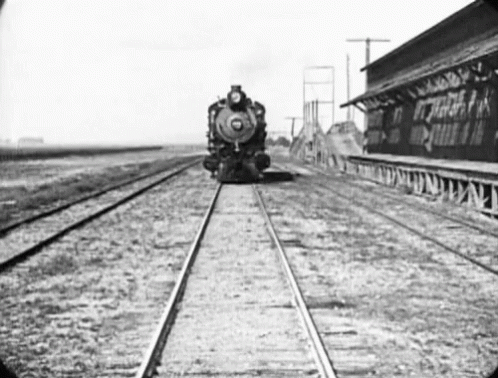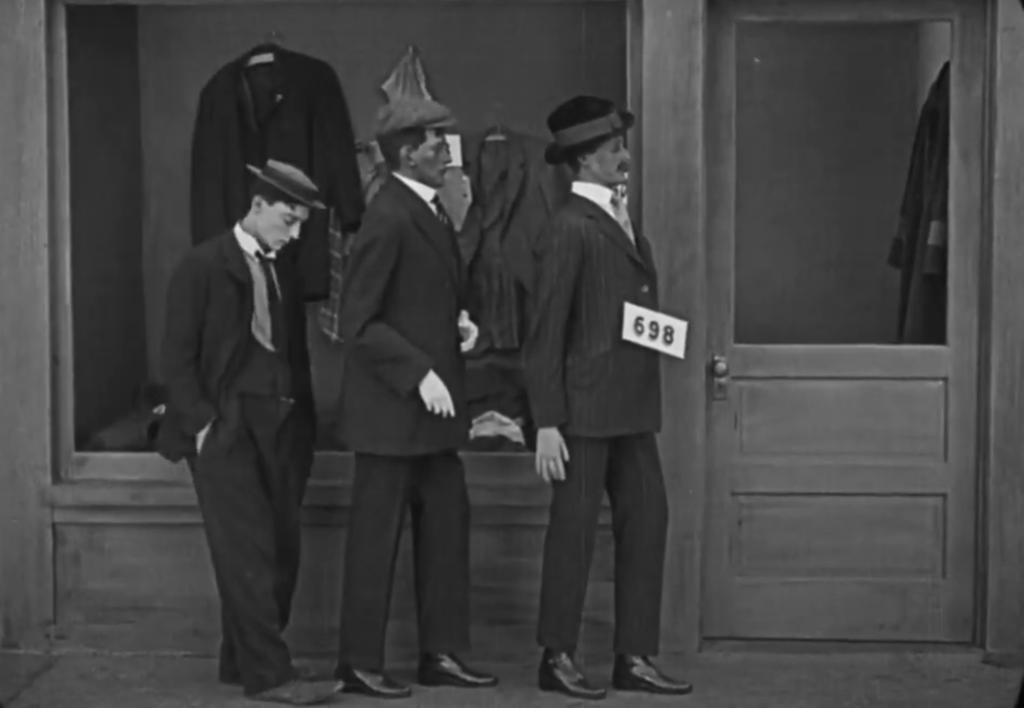
"No man can be a genius in slapshoes and a flat hat." -Buster Keaton -

"No man can be a genius in slapshoes and a flat hat." -Buster Keaton -
The Goat is a 1921 American two-reel silent comedy film written, directed by, and starring Buster Keaton. The story kicks off when a mishap during a photo shoot leads to Buster being mistaken for Dead Shot Dan, the local outlaw.

This film features one of Keaton’s most iconic scenes: a speeding train approaches the camera, eventually coming to a stop with a close-up of Keaton sitting on its front.

According to IMDB Trivia, at the 03:30 mark, when the man on the street is counting money from a wallet he found, the graffiti on the fence in the background reads “G.I.P. Funny.”


Watch the full film by hitting the play button below.
In “The Goat” (1921), Buster Keaton finds himself in a series of comedic misadventures after a case of mistaken identity. The story begins with Buster queuing up for free bread, but he doesn’t realize he’s standing behind two mannequins. By the time he notices his mistake, the bread is all gone.

Moving on, Buster peeks through a barred window into a police station where “Dead Shot Dan,” a notorious murderer, is getting his photo taken. The photographer doesn’t see that Dan’s cap is covering the lens. Dan slyly shifts aside and snaps a picture of an unsuspecting Buster. When Dan escapes, the wanted posters feature Buster’s picture with his hands on the bars.

Unaware of this, Buster continues on his way and finds a horseshoe, which he dismissively kicks aside. The next person to find the horseshoe throws it for luck and immediately discovers a wallet full of money. Buster, seeing this, retrieves the horseshoe and tosses it over his shoulder, hitting a policeman and prompting a chase. Buster evades the pursuing officers by locking them in the back of a truck.

Later, Buster intervenes in an argument between a man and a young woman walking her dog. He defends the woman and throws the man to the ground. Soon after, Buster encounters the same officers from earlier and hops onto a train to escape. Unfortunately, he arrives in a town where everyone has seen his picture on wanted posters. The townspeople flee in terror wherever he goes.
Buster’s bad luck continues when he’s in the wrong place at the wrong time again. A gangster ambushes the police chief, but the bullets miss, and the smoking gun ends up in Buster’s hand. He runs from the relentless police chief, causing chaos all over town. During his escape, Buster encounters the young woman he helped earlier, who invites him to dinner.

At her home, he meets her father—the police chief—who furiously chases Buster throughout the apartment complex. After the young woman helps him escape, they emerge onto the street where Buster sees a sign outside a furniture store that says, “You furnish the Girl, we furnish the home!” He carries his date into the store.
